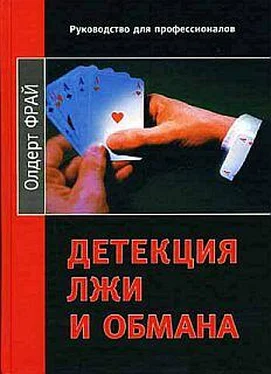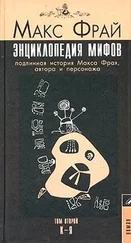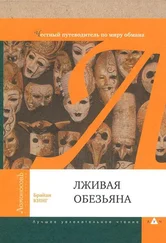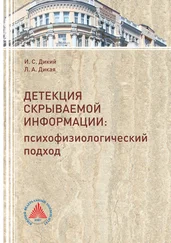Vrij, A. (1994). The impact of information and setting on detection of deception by police detectives. Journal of "Nonverbal Behavior, 18,111–131.
Vrij, A. (1995). Behavioral correlates of deception in a simulated police interview. Journal of Psychology: Interdisciplinary and Applied, 129,15–29.
Vrij, A. (1996). De rechercheur als leugendetector: Een overzicht van onder-zoeken nar nonverbaal gedrag en misleiding. Modus: Tijdschrift voor Recherche en Forensische Wetenschappen, 5,4–9.
Vrij, A. (1991a). Detecting lies in partners, friends and strangers. Unpublished data.
Vrij, A. (1991b). Gender differences in self-oriented and other-oriented lies. Unpublished data.
Vrij, A. (1998a). Interviewing suspects. In A. Memon, A. Vrij & R. Bull, Psychology and law: truthfulness, accuracy and credibility. Maidenhead: McGraw-Hill, 124146.
Vrij, A. (1998b). Telling and detecting lies: some future directions in research. Forensic Update, 54,14–19.
Vrij, A. (1998c). To lie or not to lie. Psychologie, 11, 22–25.
Vrij, A. & Akehurst, L. (1996). Hand movements during deception: some recent insights. Paper presented at the Sixth European Conference on Psychology and Law. Italy, Sienna, August 1996.
Vrij, A. & Akehurst, L. (1998). Verbal communication and credibility: Statement Validity Assessment. In A. Memon, A. Vrij & R. Bull, Psychology and law: truthfulness, accuracy and credibility. Maidenhead: McGraw-Hill, 3-31.
Vrij, A. & Bull, R. (1992). Beliefs about verbal correlates of deception: British students. Unpublished data.
Vrij, A. & Fischer, A. (1995). The expression of emotions in simulated rape interviews. Journal of Police and Criminal Psychology, 10, 64–61.
Vrij, A. & Graham, S. (1991). Individual differences between liars and the ability to detect lies. Expert Evidence: The International Digest of Human Behaviour Science and Law, 5,144–148.
Vrij, A. & Heaven, S. (1999). Vocal and verbal indicators of deception as a function of lie complexity. Psychology, Crime and Law, 5, 203–215.
Vrij, A. & Holland, M. (1999). Individual differences in persistence in lying and experiences while deceiving. Communication Research Reports, 3, 299–308.
Vrij, A. & Lochun, S. (1991). Neuro-lingui'stisch verhoren. In P. J. Van Koppen, D. J. Hessing&H. F. M. Crombag (Eds), Het hart van dezaak: Psychologie van het recht. Deventer: Kluwer, 493–505.
Vrij, A. & Mann, S. (in press). Lying when the stakes are high: deceptive behavior of a murderer during his police interview. Applied Cognitive Psychology.
Vrij, A. & Mann, S. (1999). Whokilled 'myrelative? Policeofficers 'abilityto detectreal-life high-stake lies. Manuscript submitted for publication.
Vrij, A. & Semin, G. R. (1996). Lie experts' beliefs about nonverbal indicators of deception. Journal of Nonverbal Behavior, 20, 65–80.
Vrij, A. & Taylor, R. (1999). Pofice officers' and students' beliefs about telling and detecting little and serious lies. Manuscript submitted for publication.
Vrij, A. & Van Wijngaarden, J. J. (1994). Will truth come out? Two studies about the detection of false statements expressed by children. Expert Evidence: The International Digest of Human Behaviour, Science and Law, 3, 18–84.
Vrij, A. & Winkel, F. W. (1990). Culturele verschillen in spreekstijl van Surinamers en Nederlanders: De relatie tussen «zakelijkheid» en «misleiding»; bij een politieverhoor. Recht der Werkelijkheid, 11, 3-15.
Vrij, A. & Winkel, F. W. (1991). Cultural patterns in Dutch and Surinam j nonverbal behavior: an analysis of simulated police/citizen encounters. Journal of Nonverbal Behavior, 15, 169–184.
Vrij, A. & Winkel, F. W. (1992a). Crosscultural police-citizen interactions: the influence of race, beliefs and nonverbal communication on impression formation. Journal of Applied Social Psychology, 22, 1546–1559.
Vrij, A. & Winkel, F. W. (1992b). Social skills, distorted perception and being suspect: studies in impression formation and the ability to deceive. Journal of Police and Criminal Psychology, 8, 2–6.
Vrij, A. & Winkel, F. W. (1994). Perceptual distortions in cross-cultural interrogations: the impact of skin color, accent, speech style and spoken fluency on impression formation. Journal of Cross-Cultural Psychology, 25, 284–296.
Vrij, A., Akehurst, L. & Morris, P. M. (1991). Individual differences in hand movements during deception. Journal of Nonverbal Behavior, 21, 81-102.
Vrij, A., Akehurst, L., Van Dalen, D., Van Wijngaarden, J. J. & Foppes, J. H. (1996). Nonverbaal gedrag en misleiding. Tijdschrift voorde Politie, 58, 11–14.
Vrij, A., Dragt, A. W. & Koppelaar, L. (1992). Interviews with ethnic interviewees', nonverbal communication errors in impression formation. Journal of Community and Applied Social Psychology, 2, 199–209.
Vrij, A., Edward, K., Roberts, K. P. & Bull, R. (1999). Detecting deceit via Criteria-Based Content Analysis, Reality Monitoring and analyses of nonverbal behaviour. Paper presented at the Ninth European Conference on Psychology and Law, Dublin, Ireland, July 1999.
Vrij, A., Foppes, J. H., Volger, D. M. & Winkel, F. W. (1992). Moeilijk te bepalen wie de waarheid spreekt: Non-verbaal gedrag belangrijkste indicator. Algemeen Politie Blad, 141,13–15.
Vrij, A., Kneller, W. & Mann, S. (in press). The effect of informing liars about Criteria-Based Content Analysis on their ability to deceive CBCA raters. Legal and Criminological Psychology.
Vrij, A., Semin, G. R. & Bull, R. (1996). Insight in behavior displayed during deception. Human Communication Research, 22, 544–562.
Vrij, A., Winkel, F. W. & Akehurst, L. (1991). Police officers' incorrect beliefs about nonverbal indicators of deception and its consequences. In J. F. Nijboer & J. M. Reijntjes (Eds), Proceedings of the First World Conference on New Trends in Criminal Investigation and Evidence. Lelystad: Koninklijke Vermande, 221–238.
Vrij, A., Winkel, F. W. & Koppelaar, L. (1988). Culturele verschillen in nonverbaal gedrag: De persoonlijke ruimte van Nederlanders en Surinamers. Migranten-studies,4, 40–49.
Vrij, A., Winkel, F. W. & Koppelaar, L. (1991). Interactie tussen politiefunc-tionarissen en allochtone burgers: twee studies naar de frequentie en het effect van aan-en wegkijken op de impressieformatie. Nederlands Tijdschrift voor de Psychologie, 46, 8-20.
Wagenaar, W A. & Groeneweg, J. (1990). The memory of concentration camp survivors. Applied Cognitive Psychology, 4, 11–81.
Walkley, J. (1985). Reading the suspect. Police Review, 93, 331–340.
Walters, S. B. (1996). Kinesic interview and interrogation. Boca Raton, FL: CRC Press.
Читать дальше











